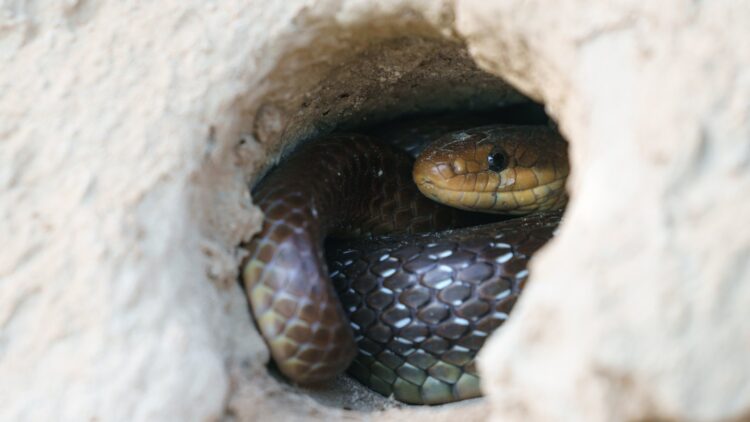Snakes are really common in some regions, but winter can make us forget how many of them there truly are and how dangerous they can be, after all like most cold blooded animals they dislike the cold and choose to hibernate and once the heat is here they reemerge to live their best lives. The difference between spring and summer in this case is that during spring we do not make as much use of our backyards and can keep blissfully ignoring the problem until summer party season is in full swing.
The problem is that by the time we get out there, they have had time to make their own burrows or holes and have taken over. While most snakes are not venomous, there is a percentage that is, and even if they would not kill us with their bite, venomous or not it would not be a pleasant experience to encounter one unpredictably and be bitten.
Plus, one of the fastest ways to get bitten by a snake is to make sudden movements in their vicinity, which happens to be exactly what humans do when they encounter one by surprise.
How to identify if you have snakes living in your garden
A fairly good giveaway is if you have a lot of smaller sized holes in your garden. Now, this might not indicate snakes as other small animals like moles, mice and rabbits also make burrows and holes to camouflage in, but these animals are also some of snakes’ favorite foods, so if you have a lot of prey, predators are usually not far behind.
Some insects, such as bees and solitary wasps, are also experts at excavating cavities to lay their eggs. This completely natural behavior is part of the garden ecosystem. But the interesting thing is that these structures can end up being used by other animals, such as reptiles or even snakes, as shelter.
If you are going to investigate any of these holes, please ensure that you are fully covered, with closed shoes preferably made from leather, heavy pants so that fangs have a harder time penetrating, leather gloves that are as thick as you can make them and full sleeves. If you can, some kind of protection for your face would not be remiss.
The difference between snakes and other mamals that can dig their own burrows is that snakes do not have paws or claws that can help them dig, so they are in a scavenger position when it comes to finding a hole to take over and have their offspring or just lay low for a while. This has made them good at adapting and hiding and can mean that the place where they are hidden is not a perfectly crafted hole that suits their needs to the T, but it is a dip in the terrain that is somewhat hidden.
Theys till have their preference, and they will usually choose holes that have smaller entrances, usually the size of their head as a reference, as it is what will keep them protected the most, holes that are located in wet, moist and shaded areas so that they can retreat to them and that go somewhat deep.
A good way to know if you have snakes in your garden or near one of these holes is to look for specific reptile activity, like:
- Shedding remains: fragments of dry skin near the entrance.
- Tracks on the ground: wavy marks characteristic of a snake’s slithering.
- Distinctive droppings: usually dark and elongated, with a whitish tip.
If you do happen to find one and are unsure, keep away and call animal control, as they are capable of dealing with these creatures without getting hurt.

